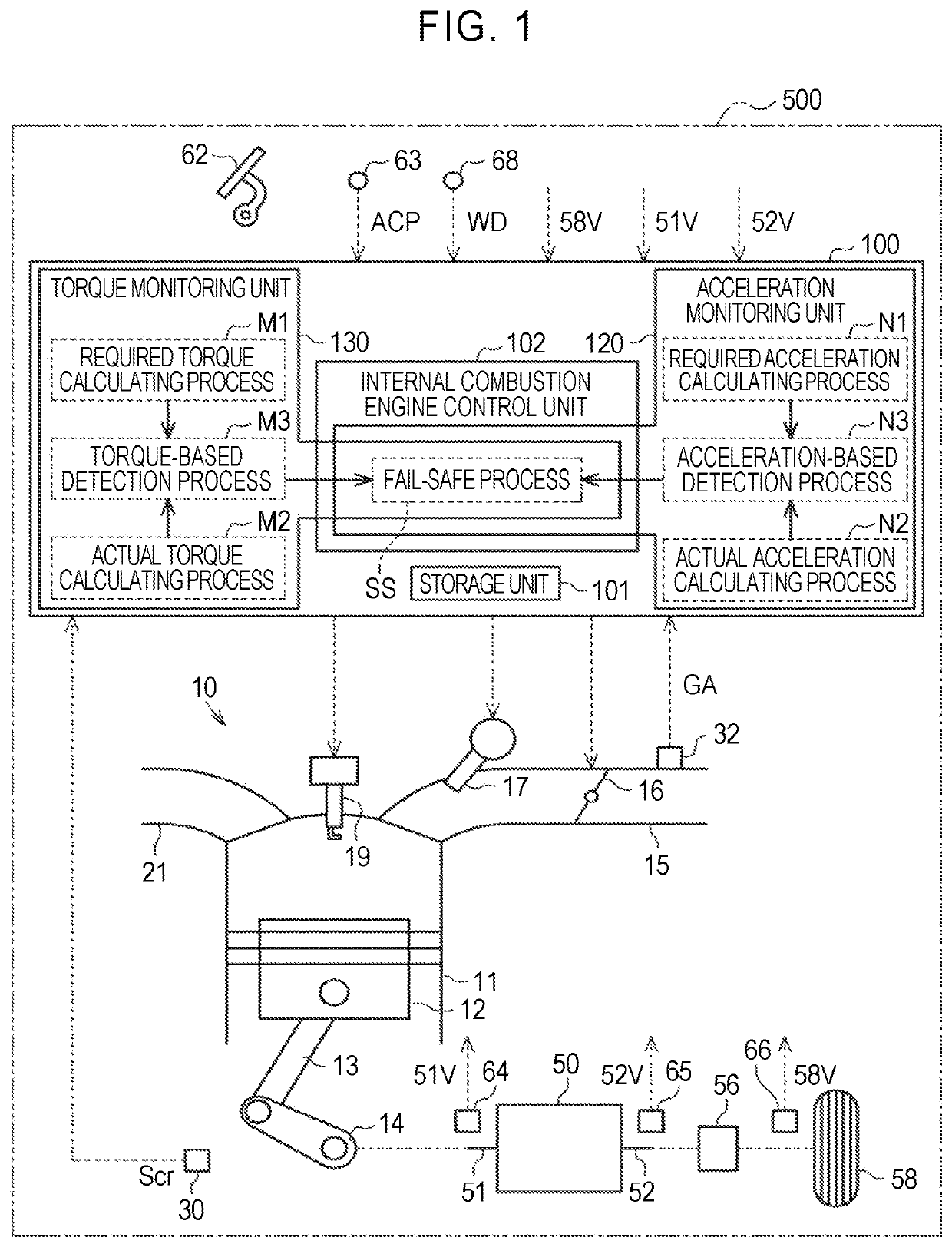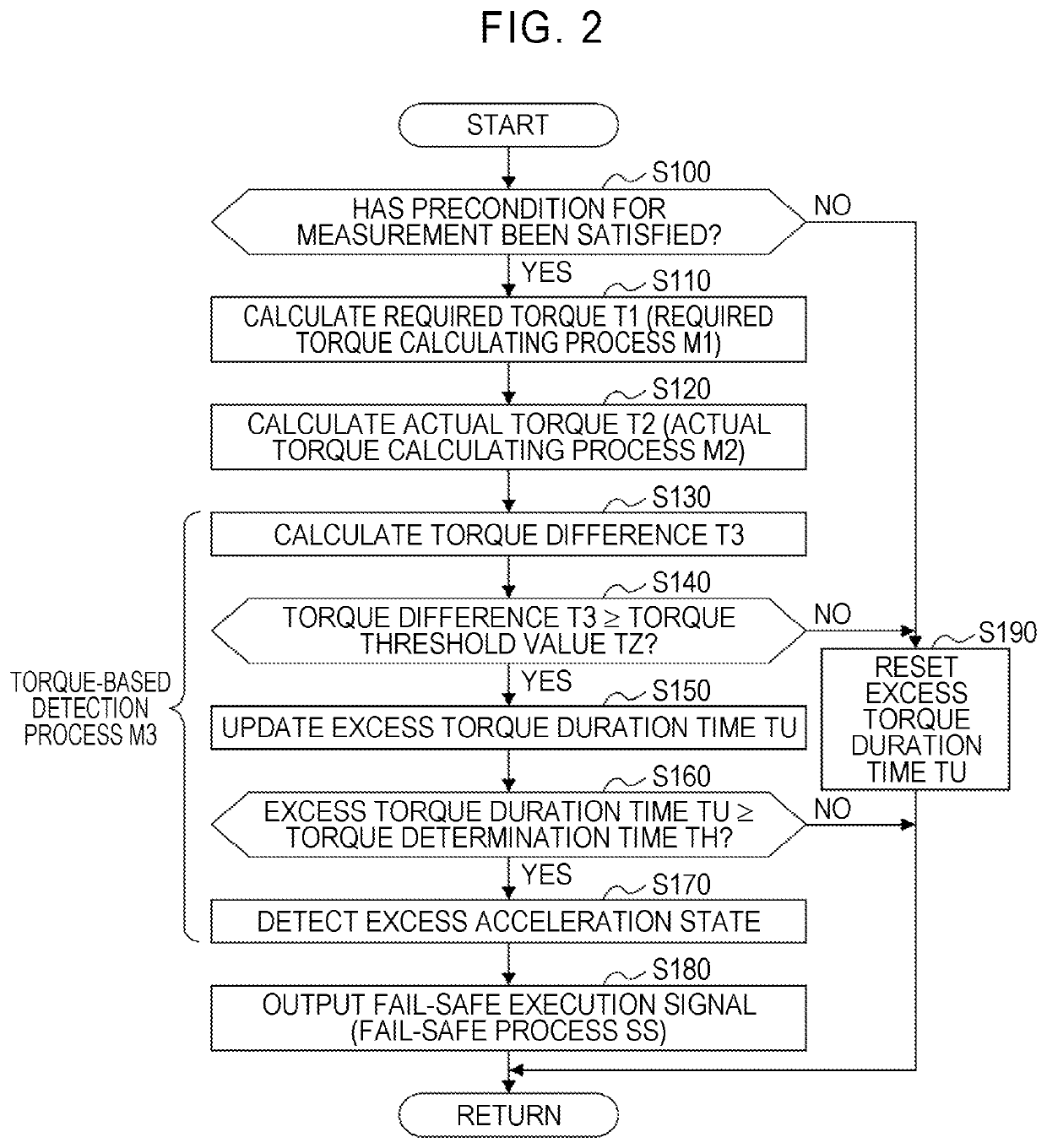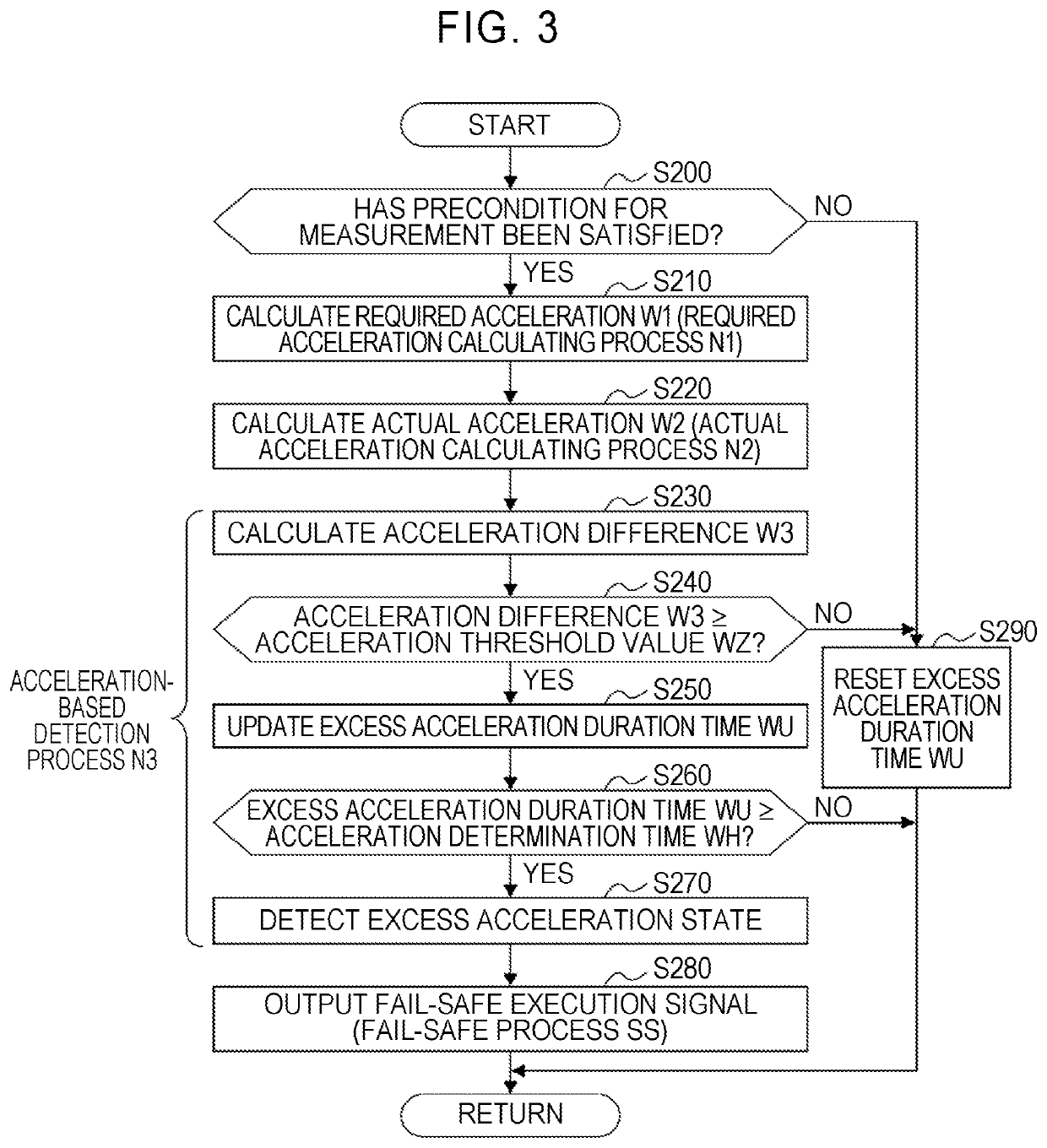Control device for vehicle and vehicle control program
a technology for controlling devices and vehicles, applied in electric control, machines/engines, transportation and packaging, etc., can solve problems such as abnormalities in control circuits that calculate actual torque, control circuits may not be able to acquire parameters, and actual torque or a required torque may not be accurately calculated, so as to prevent detection of excess acceleration state, prevent detection of error detection, and reduce the effect of vehicle acceleration
- Summary
- Abstract
- Description
- Claims
- Application Information
AI Technical Summary
Benefits of technology
Problems solved by technology
Method used
Image
Examples
Embodiment Construction
[0021]Hereinafter, a control device for a vehicle according to an embodiment of the present disclosure will be described with reference to the accompanying drawings.
[0022]First, a rough configuration of a vehicle will be described below.
[0023]As illustrated in FIG. 1, an internal combustion engine 10 which is a drive source of a vehicle 500 is mounted in the vehicle 500. The internal combustion engine 10 includes a cylinder 11 in which a mixture gas of fuel and intake air is combusted. A plurality of cylinders 11 is provided, but only one cylinder is illustrated in FIG. 1. A piston 12 is accommodated in the cylinder 11 such that it can reciprocate. The piston 12 is connected to a crank shaft 14 via a connecting rod 13. The crank shaft 14 rotates with reciprocation of the piston 12. A crank angle sensor 30 that detects a rotational position Scr of the crank shaft 14 is disposed in the vicinity of the crank shaft 14.
[0024]An intake passage 15 that is used to introduce intake air from ...
PUM
 Login to View More
Login to View More Abstract
Description
Claims
Application Information
 Login to View More
Login to View More - R&D
- Intellectual Property
- Life Sciences
- Materials
- Tech Scout
- Unparalleled Data Quality
- Higher Quality Content
- 60% Fewer Hallucinations
Browse by: Latest US Patents, China's latest patents, Technical Efficacy Thesaurus, Application Domain, Technology Topic, Popular Technical Reports.
© 2025 PatSnap. All rights reserved.Legal|Privacy policy|Modern Slavery Act Transparency Statement|Sitemap|About US| Contact US: help@patsnap.com



